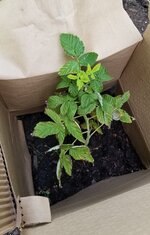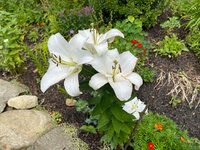As this world gets more unstable, chaotic and uncertain, self reliance becomes more important.
Food is something we ALL agree on. Right? I mean we all like to eat.
How many of you grow some kind of food. From a windowsill herb garden to a plot of land or maybe a community garden.
Let’s share tips, experience, ask questions, etc.
This is the thread for all your backyard farmer needs.
No politics please.
This thread is only about growing food.
We all need to eat.
Food is something we ALL agree on. Right? I mean we all like to eat.
How many of you grow some kind of food. From a windowsill herb garden to a plot of land or maybe a community garden.
Let’s share tips, experience, ask questions, etc.
This is the thread for all your backyard farmer needs.
No politics please.
This thread is only about growing food.
We all need to eat.








